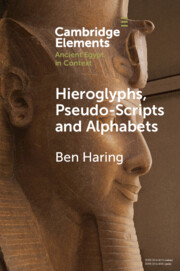Element contents
Hieroglyphs, Pseudo-Scripts and Alphabets
Published online by Cambridge University Press: 22 November 2023
Summary
Information
- Type
- Element
- Information
- Online ISBN: 9781009400800Publisher: Cambridge University PressPrint publication: 21 December 2023
References
Accessibility standard: Unknown
Why this information is here
This section outlines the accessibility features of this content - including support for screen readers, full keyboard navigation and high-contrast display options. This may not be relevant for you.Accessibility Information
- 6
- Cited by
